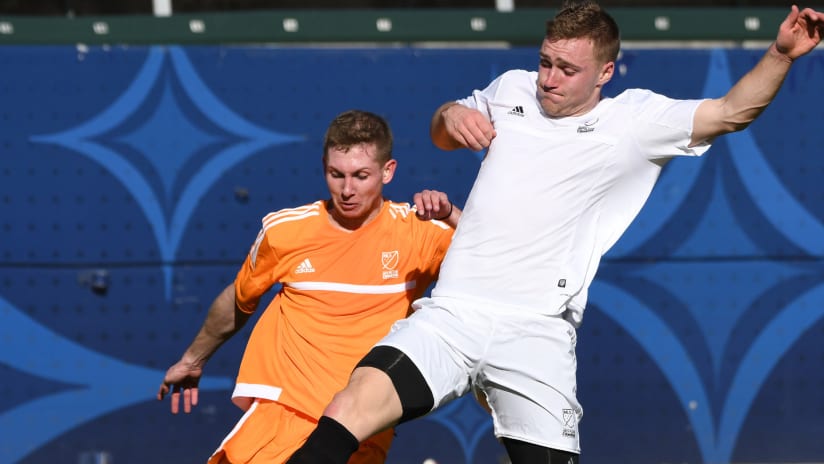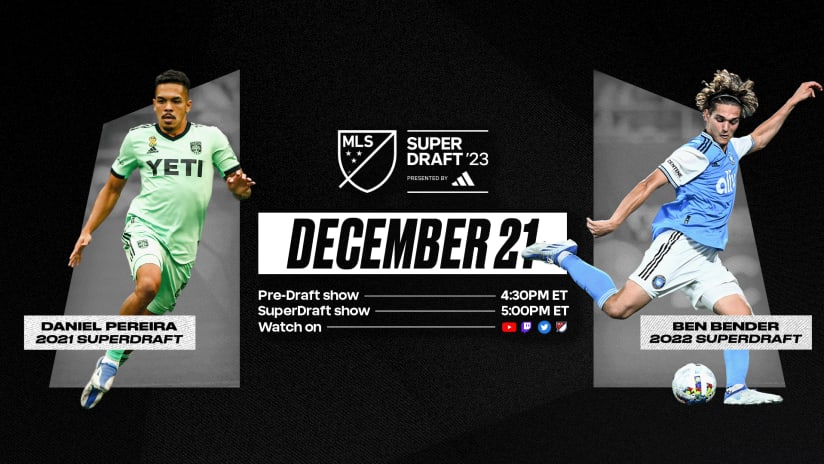It’s always difficult to identify talent. It’s even more difficult when you’re comparing apples to oranges. And when it comes to the MLS SuperDraft, team personnel are trying to grab oranges from an apple orchard.
It goes without saying, but I’ll state it explicitly because it’s more true than most people realize: Youth and college soccer are not the same as professional soccer. It’s not just that they involve different levels of quality. They are almost different sports.
It’s not to say college soccer or youth soccer in America are bad (I’m not about to get into that conversation with you). They are just different. It’s the nature of moving into a higher tier. When the employees can move faster, think quicker, and execute more sharply, it changes the way the coworkers think and act. It’s not just doing the same thing better, it’s largely a different thing altogether. A new critical mass develops and it changes the interactions and demands a new way of thinking and conducting your business. The written rules remain the same, but all of the nuances change.
In short, a player who is good in one arena will not automatically be good in the other.
It’s not news, of course, to call any professional sports draft a crapshoot. But there’s a lesson to be taken from the “why” it can be a crapshoot.
Before a team identifies a player in the draft pool, it needs to acknowledge the inherent difference between the pro and college levels. You aren’t trying to identify the best players in the lower level, because the lower level doesn’t look that much like your level. As such, the team isn’t just looking for a good player, it should be looking for a player who is good at the things relevant and transferable to the professional game.
Whether a player is good in the college game is irrelevant; it’d be akin to judging a golfer by his tennis abilities (it’s obviously an extreme example, but I’d argue ignoring the point could be nearly as unthinkable).
What are some of the skills that could transfer? I don’t have a perfect answer. But after talking with people in the soccer world, here are a few I would trust:
1) Striking a ball
Shooting. Crossing. Clipping a ball to a teammate. Driving a long ball.
They are instantaneous actions that are independent of everything around the player and the ball. The exact moment the player makes contact with the ball, everything is the same between a college game and a professional game. There aren’t any variables that change. When you see a college player who can whip a cross into the ball that you like, you can reliably expect him to play the same kind of crosses at the next level.
2) Movement in the box
A striker is always more than the sum of his goals, and never more so than when transitioning between levels.
"Goals scored" depends largely on the quality of the service to the goal scorer. The quality of the passes – and the ability of the defenders to stop them – changes at the professional level. Instead of a "Goals scored" statistic, it’s better to look at the player’s mindset and movement around the goal. Watch the parts that are independent of others’ actions.
How smart are his runs? Does he just run toward the goal, or does he change his pace and his angles? Does he know how to time a run and get to a defender’s blindspot?
In terms of evaluating a forward, it’s often much better to look at the moments before the goal rather than the goal itself. If the player is smart with his movement, he will get more chances with better service.
3) Athleticism
I’m not suggesting a team should draft a player based on athleticism, but physical attributes, such as speed, acceleration, and center of gravity, are easy to observe.
If you value a quick winger or a center back who can jump, it’s easy to notice one. A player’s ability to run doesn’t change from one field to the next (it seems painfully obvious, but you’d be surprised). To a certain extent, it’s much smarter to draft a player based on a known quantity than to go for something you can’t be completely sure about.
4) Passing ability out of the back
I don’t always trust a player’s ability to pass or his “knowledge of the game.” A lot of information chunks change from the college level to the pros – whatever “smarts” or “composure” a player developed are also no longer relevant, because many of the pictures look different – but one picture that remains the same is the starting position of defensive formations. When either Wake Forest or the Portland Timbers line up in a 4-3-3, it looks like a 4-3-3. A center back gets the exact same view when building out of the back against both teams.
Additionally, a center back doesn’t get closed down that much faster in an MLS game than an NCAA game. Unlike most positions on the field, as a player moves up levels, a center back doesn’t need to improve his speed of thought on the ball that much. Subsequently, a center back’s passing ability and range transfer pretty well. If he can clip a ball into a forward’s feet in a college game, he will be able to do it in the pro game.
It doesn’t mean he will be able to be a good MLS defender, but it's an attribute that’s a reliable consistency when not many can be found.
To provide the opposite points, here a few traits I would not trust when evaluating college players at the Combine:
1) 1-v-1 defending ability
Having Fabian Castillo run at you is an entirely different experience than having anyone in college soccer run at you.
2) 1-v-1 attacking ability
Beating someone on the dribble is largely a product of confidence, and it’s difficult to tell how a human being will react when put into a professional environment where he’s no longer “playing a game” but rather fighting for a living.
3) Composure on the ball
Admittedly, many people I talk to about this topic disagree with this point. They suggest you can spot a player who feels more comfortable in possession or who seems to read the game better.
I say it’s hogwash.
The game moves so much faster at the professional level and the pictures look so different, it’s impossible to know how a player will adjust. I do great on a treadmill on level 10, but when you push it to level 12, I fall off like a pigeon after getting hit by a stone.
Needless to say, I’m passionate about the topic. We talk a lot about breeding young talent, as we should. But too often we rush to adore the standout youth or college players without thinking about how transferable the success can be.
It sounds obvious enough: The professional game is different than college or youth soccer. And so is the way you identify pro talent.
Bobby Warshaw is a former professional player who played in MLS (2011-2013) and in Scandinavia after an accomplished college career at Stanford. A columnist and podcast host for Howler magazine, Warshaw is a published author and has also appeared on ExtraTime Live and ExtraTime Radio.














